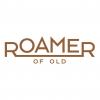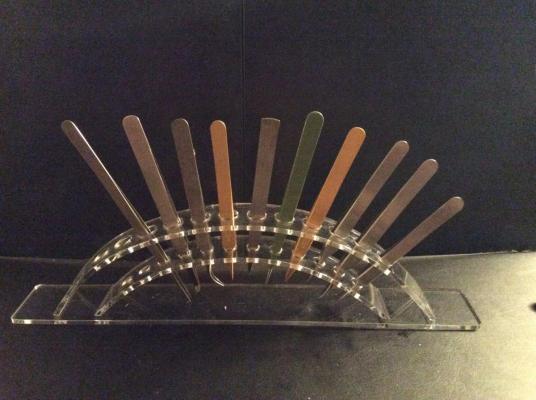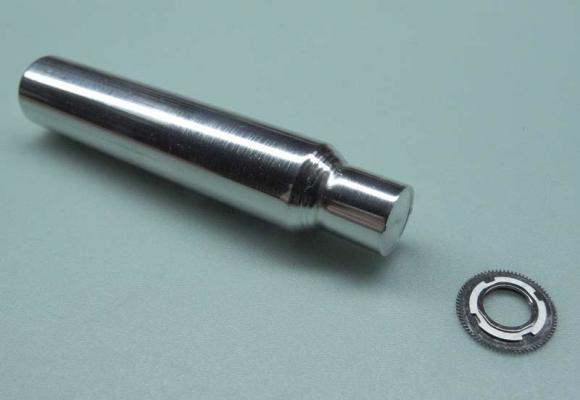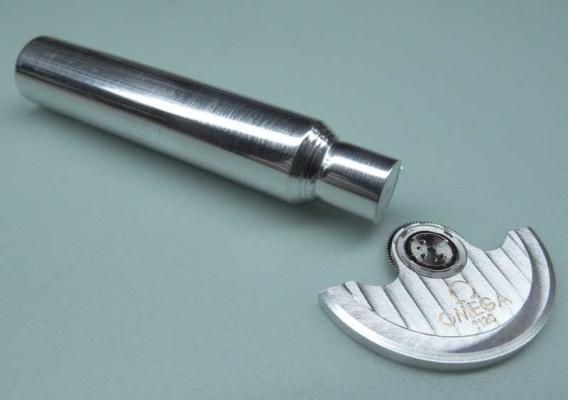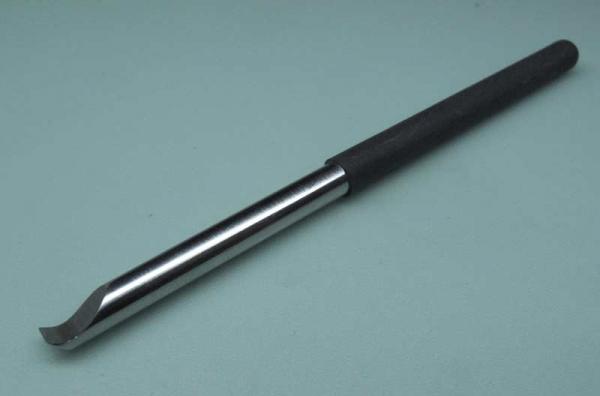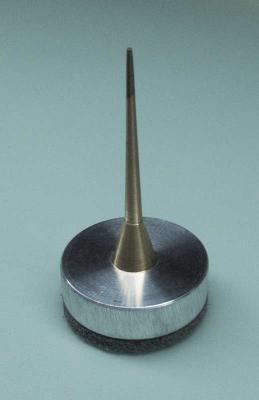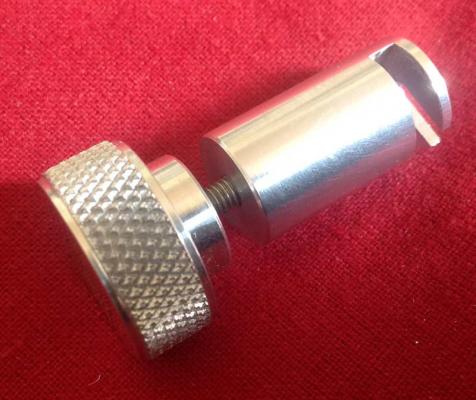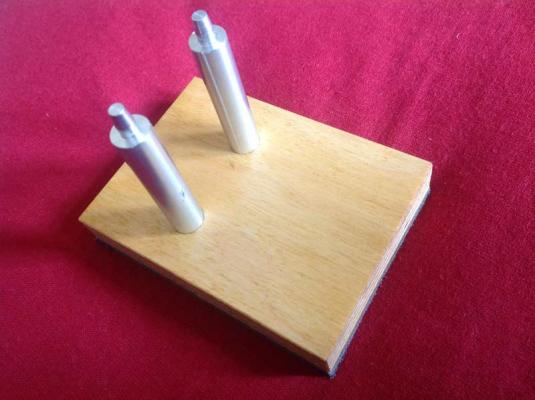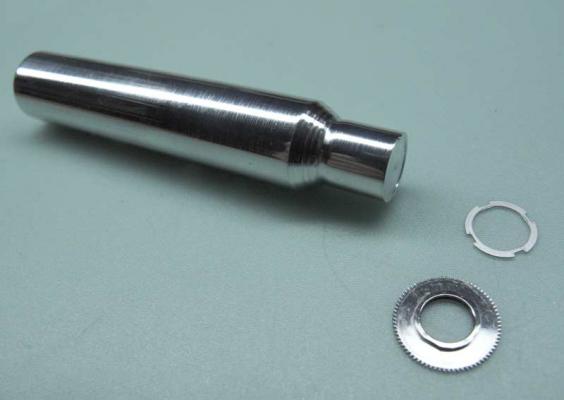Leaderboard
Popular Content
Showing content with the highest reputation on 11/13/15 in all areas
-
A strange tool to find pictures of because it goes by multiple of names. Plus to make things more interesting hairspring can also go by balance spring. Then for such an interesting tool not finding a lot of references to it? http://www.geocities.ws/dushang2000/Balance%20Tools.html#Balance%20Spring%20Stud%20Table3 points
-
I suspect that the date quick set is by cycling back and forth between 00:00hrs and 20:00hrs. Pull the stem to the setting position and advance the hands past the 12 o'clock position. If the date doesn't change then this is 12:00hrs so keep advancing the hands round to 12 again (00:00hrs) and the date should change over. Now adjust the hands backwards to the 8 o'clock position (20:00hrs), you may see the date jumps ever so slightly, and then go forwards again past 12 (00:00hrs), the date should change again. You should be able to keep cycling backwards and forwards between 20:00hrs and 00:00hrs and the date should advance one day each time. By the way that's a nice watch, and pretty good quality. I have a Garrard sitting in my to do box and am very much looking forward to sorting it out and wearing it. A slighter later vintage than yours though. I believe that the company was the same Garrard that made the high quality record turn tables. Enjoy2 points
-
1 point
-
I just thought it would be interesting to post my experience of original Omega ub crystals versus Cousins generic parts with an omega symbol. I have a vintage Seamaster and fitted a Cousins steel ring crystal some months ago. The diameter at 29.6mm was right, but Cousins do not offer any range of heights. Looking straight on, everything was ok, but at an angle, the edge distortion was significant. The crystal also scratched very easily. I have just replaced with a genuine Omega part, at 3 times the price. So what's the difference? Well the Omega part is 0.5 mm lower. Sounds like nothing, but it makes a significant difference visually. The chrome ring is wider with a shallower angle. It's hard to describe how that affects the illumination of the dial, but it does. The edge distortion is also gone. So maybe no surprises. We buy watches because of the way they look (well I do anyway), and will therefore be critical if they don't look right. Not quite right was annoying me, and it's surprising how much difference these minor details make. So what's my point? Well hopefully when we can no longer buy a genuine Omega part, there are better quality generic alternatives or sadly these old watches will start to lose some of their subtle beauty... S1 point
-
I think you're talking about an acrylic cristal, 7 GBP generic Vs 25 for the original? Not too bad in either case. Consider that owners of Omega and other bespoken brands are being asked up to USD 600 (yes six hundreds) for a crystal change by "authorized dealers". In the future who is able to make good replacement parts may be able to enjoy a good market - and would deserve success IMHO.1 point
-
1 point
-
Here are some of my "tools" Small tiltable table for one of my lathes larger tiltable table for lapping Lappingmachine for cases Simple chuck "Adapters" for case opener 5700 to open Speedmaster MKII cases, Heuers etc Stand for oilers, anodized aluminium Demagitizer ....and much more - I almost like making tools/machines more than refinishing watches! :D1 point
-
This is my second installment of my experience of watchmaking school. I am entering my 4th week of school. The way ahead still seems long and full of possible obstacles. It is hard to imagine that there will ever come a time when I can begin to think of myself as a watchmaker. I have been watching my instructor and fellow students who are farther along. I've also watched many videos of watchmakers with almost a lifetime of service and I think that I may never come close to them. Perhaps it's best to say, following the family motto of the great explorer Ernest Shackleton, fortitudine vicimus? As you work in our shop at the York Time Institute you have the feeling of being transported back to earlier era of watchmaking; more like a 19th century apprenticeship than a modern, clean, college of the science of horology. It is certainly not as hygienic as the modern Swiss factory/laboratory (we have two dogs who pay us frequent visits!) but that is probably by intent, for our instructor is, when it comes to watchmaking, in large measure an antiquarian. He loves old tools and techniques and the substrate of our craft: old watches and clocks. I find it hard to consider such a love for the old as a defect—like so many modern people do. And, anyway, I've found from experience that familiarity with the old makes for a better understanding of the new when such becomes necessary. For example, I've found an understanding (and fondness for) 19th century classical mathematics of the type found in Whittaker and Watson's A Course in Modern Analysis or Hardy's A Course of Pure Mathematics, has served me well for embracing more modern math which, in spite of its labyrinth of jargon and complex sub-divisions, often seems like a fancy way to swat flies. Ditto computer science. Having, in a sense, gotten in on the ground floor, there are some concepts which I naturally understand. So it seems to me that it is always possible to use to old as a springboard to the new whereas learning the new without reference to the old is like building a scaffold in the air. I also accompany our instructor on house calls. Last week we visited two homes to repair grandfather clocks. It’s good experience towards dealing with customers in their homes. This is real apprenticeship, though we don’t call it that. In fact, we do have apprentices but they’re far more advanced than I am. Perhaps someday! Since my first week I've been learning and restoring some tools I've acquired. I recently obtained, at a very reasonable price, and 8 mm Boley lathe with a number of accessories in a, once nice, but now dilapidated box. I have almost a complete set of collets and a very nice set of gravers. Most of the restoration will be of the box, which I started on today (Sep. 28). So far it’s looking great. I sanded it and put on a nice stain. Tomorrow I’ll shellac it and repair the inside so that the lathe and its parts and accessories will be neatly stored as they were when it was new. I've also obtained a number of free tools from donations made by people who, learning about our school, have generously given us surplus tools. Some of these have to be refurbished but our instructor, because of his aforementioned love of tools, is of immense help. Besides the lathe I have restored staking punches and stumps, a staking anvil, bench blocks, Vernier calipers and a vintage bench micrometer, etc. I am told that I will soon be leaving the “grammar” of tools, their names uses and restoration, to their application or “logic” and that will be the subject of my next installment.1 point
-
1 point
-
I use a ribbed mat for my tweezers, hand levers, and hand fitting tools. Untitled by Micky Aldridge, on Flickr1 point






